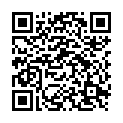|
|
|
| Module code: E512 |
|
1V+1U (2 hours per week) |
|
3 |
| Semester: 5 |
| Mandatory course: yes |
Language of instruction:
German |
Assessment:
Written examination
[updated 12.03.2010]
|
E512 Electrical Engineering, Bachelor, ASPO 01.10.2005
, semester 5, mandatory course
|
30 class hours (= 22.5 clock hours) over a 15-week period.
The total student study time is 90 hours (equivalent to 3 ECTS credits).
There are therefore 67.5 hours available for class preparation and follow-up work and exam preparation.
|
Recommended prerequisites (modules):
E406 Power Electronics I
[updated 12.03.2010]
|
Recommended as prerequisite for:
E608 Power Electronics III
[updated 12.03.2010]
|
Module coordinator:
Prof. Dr.-Ing. Stefan Winternheimer |
Lecturer:
Prof. Dr.-Ing. Stefan Winternheimer
[updated 12.03.2010]
|
Learning outcomes:
After completing this module, students will have acquired a basic understanding of power electronics. They will have the skills to select and deploy the most suitable electronic power converter for a specific application. Students will also be able to dimension the passive circuit components.
[updated 12.03.2010]
|
Module content:
DC/DC converter circuits
Controlling DC converters
Buck converters
Boost converters
Buck-boost converters
Two-quadrant converters
Full-bridge DC/DC converters
Comparison of DC power converters
Protective circuits
Buck converters with parasitic components
Snubber circuits for limiting the rate of voltage rise (‘turn-off snubbers’)
Overvoltage snubbers
Snubber circuits for limiting the rate of current rise (‘turn-on snubbers’)
Switched mode DC power supply units
Flyback converters
Forward converters
Half-bridge converters
Full-bridge converters
Transformer design
[updated 12.03.2010]
|
Teaching methods/Media:
Lecture notes, overhead transparencies, blackboard
[updated 12.03.2010]
|
Recommended or required reading:
Jäger Rainer, Stein Edgar: Leistungselektronik, 5. Aufl.,
Berlin / Offenbach: VDE-VERLAG, 2000
Mohan, Undeland, Robbins: Power Electronics, 2nd Edition,
New York / Chichester / Brisbane / Toronto / Singapore: John Wiley & Sons, 1995
[updated 12.03.2010]
|


